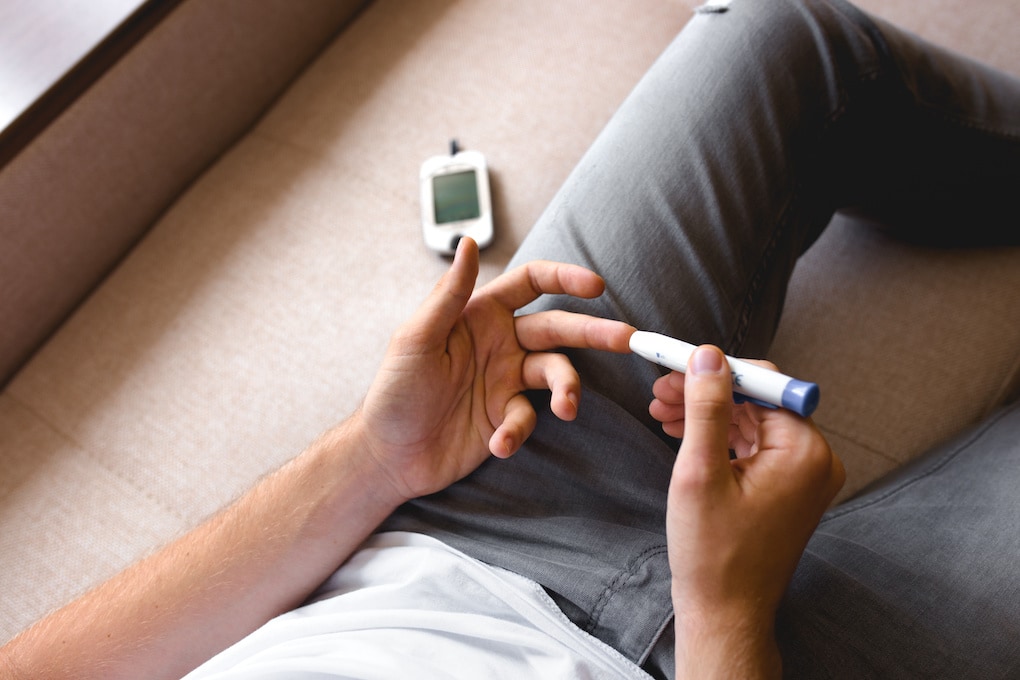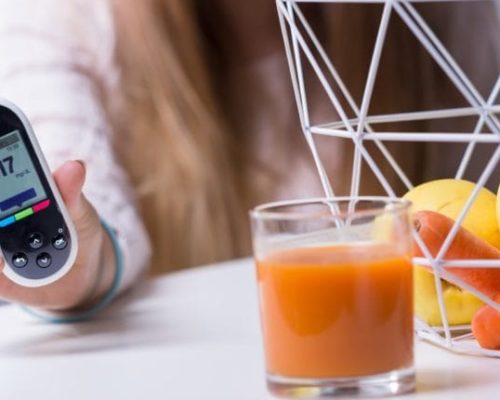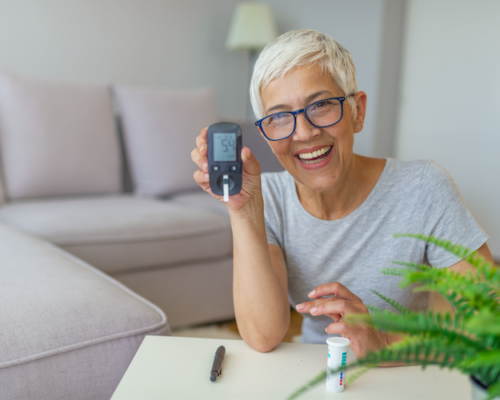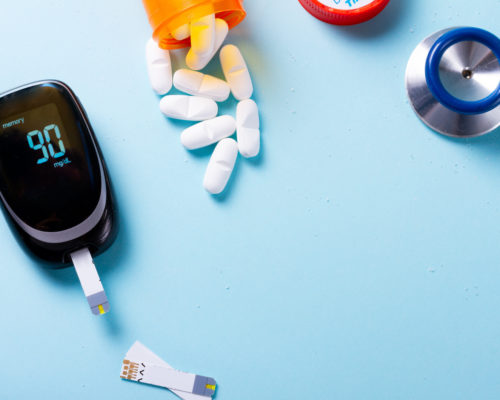Getting accurate blood sugar readings is vital to managing your diabetes. Many blood glucose meters claim to be accurate, but are they actually?
While blood glucose meters are mostly accurate, certain factors can cause a bad result, which can be detrimental to treatment and administering the proper amount of insulin.
But is your blood glucose meter accurate? If not, how can you appropriately manage your levels?
Table of Contents
10 Most Common Factors That Affect Glucose Meter Accuracy
People with diabetes are familiar with the feeling that comes if they skip lunch (or eat too much). But that’s not the only thing affecting blood glucose readings. Because our glucose level is affected by many other factors, such as the multiple components that make up your blood, blood glucose meter technology has improved to lessen the impact of these. Even so, these are the most common reasons we see inaccuracies in readings:
1. Faulty Test Strips
The test strips used with your glucose meter can expire or even be faulty if exposed to extreme temperatures or other elements. Some glucose meters are known to give inaccurate results if the test strips become faulty after opening, or if the reader itself is damaged. If you notice that your blood sugar level seems abnormal in comparison to previous results, it may be time to replace your test strips altogether.
2. Low Red Blood Cells
Dehydration and anemia can cause an excessive amount of red blood cells in your blood. When your red blood cell count is low, this can lead to inaccurate results.
3. Extreme Temperatures
Storing your glucose meter and test strips in a place that’s too cold or too hot can cause the devices to malfunction. It’s ideal to keep everything, and even test, at room temperature for best results.
4. Location of Testing Site
Fingertip samples by far give the most accurate blood glucose measurements. This is especially true when your blood sugar level rises or falls rapidly. If you use a CGM in another part of your body and aren’t sure the result is accurate, test at your fingertip as well to compare.
5. User Error
Knowing how to use and read your glucose meter kit is vital to getting accurate readings. Try having a cheat sheet handy that goes through how to get the most accurate reading, what the readings mean, and when the best times to test are.
6. Issues With the Meter
Just like your test strips can go bad, so can your meter. Just like any other technology, glucose meters can get outdated and even break. Pay attention to the consistency of your readings and if you have any issues with battery life or other things with your meter. Getting a new meter could mean life or death for you.
7. Too Small of a Sample
Not putting enough blood on the testing strip can also cause a bad or inaccurate result. To avoid this problem, always use enough blood to cover the appropriate testing area.
8. Improper Coding
In order for your meter to be able to read the test strip, the coding on the test strip has to match what’s set up on your glucose meter. Make sure both devices are coded properly and do not mix them up. Also, only purchase and use testing strips that are intended for your specific glucose meter.
9. Cleanliness of the Skin
Dirt, alcohol, and other substances on your skin when you prick your finger can also sway results. While alcohol is vital to creating a sterile surface, make sure it dries all the way before testing. And in addition, always keep your hands and your testing site clean before testing.
10. Not Calibrated
Calibrating your glucose meter is essential to getting accurate readings. Similar to zeroing out a scale, calibration can set the device to the proper measurement and reading to get your results.
Being aware of what can cause an inaccurate reading is essential to not only maintaining your well-being but also knowing when it’s time to go see a doctor. While you can follow the proper protocols to ensure an accurate reading, sometimes it’s just the meter itself that needs to be addressed.
All meter manufacturers may have their accuracy questioned, and because of this, newer meters are your best bet to get the most accurate readings. But even the newest state-of-the-art meters have an FDA acceptable tolerance of +/- 20%.
Meter Standards Since 2016
Because older meters were notorious for poor accuracy, the FDA implemented an accuracy study guideline in 2016 that all new meters must pass before approval. The tighter tolerance implemented is +/-20% for 99% of the readings. Pops Rebel has been through this study successfully and submitted data to the FDA that met an even tighter standard!
What does it mean for a meter to have 99% of results with the new standard of +/-20% accuracy?
Let’s assume that we magically know your true glucose is 100 mg/dl. If you check your blood sugar 100 times, an accurate meter may show 99 results within the range of 80 to 120 mg/dl, with most of the results nearer your true glucose level. And it is still acceptable that one result may be even further out of the +/-20% tolerance.
This table will help you understand the +/- 20% range for various glucose levels.
Curious How Your Meter Compares to Others? Here’s How to Tell.
People with diabetes may want to compare their new meter with the old one, to ensure it is more accurate. But how can one do that?
Understanding this difference becomes even more challenging when you compare glucose meters. The two meters may use different technology, one or both of them may not have passed the FDA’s accuracy testing, and they both allow a tolerance of results.
Let’s assume your glucose is 220 mg/dl. Using our table above, it is possible that two state-of-the are meters may show results of 176 and 264 and both be correct! As this graph shows, the higher the actual glucose, the window of allowed results gets larger.
Newer meters, like Pops Rebel, may implement new technology to give an even truer glucose result, and comparing old to new can be very challenging.
Comparing becomes even more difficult when a Continuous Glucose Monitor is involved as we discuss in our BGM vs CGM blog. Another challenge we have written about is comparing your meter readings to your A1c results.
Conduct an Experiment: Testing the Accuracy With Quality Control Tests
Utilize these quality control checks to ensure that your meter is in good working order:
1. Use a Control Solution
With your blood glucose monitor, you may have received a control solution which can be a control test for accuracy. Following your usual blood testing procedure and schedule, perform the test with the control liquid, but also with your blood sample. Do this every time for a few days and track the readings to make sure your meter and testing strips are working appropriately.
- Note: Every time you open a new pack of test strips, you should first test using the control solution. Additionally, every time you get suspicious results, introduce the control solution as a test.
2. Compare With Recent Lab Results
If you have noticed inconsistent or irregular results, be sure to bring your glucose monitor with you to your next appointment (or schedule one if you need to). Have your doctor take a sample and run their own tests, then immediately test your blood sugar on the spot to compare it to their well-controlled results. Physicians say that results +/- 15% of a lab reading are considered accurate.
What Else Can Be Done to Ensure the Most Accurate Reading?
There are some basic things you can do that will help you understand and control the differences between meter results.
- Wash and dry your hands before you test. One study showed blood sugar results went from 80 mg/dl to 275 mg/dl just by handling a peeled apple!
- Keep your testing supplies stored at room temperature to keep them the most accurate.
- Note that your blood sugar may be changing rapidly after you eat, after you exercise, and after you take your medications.
- Stay well hydrated!
Improve your glucose meter accuracy by up to +/- 15% with the Pops Rebel device. And if you still have questions about your glucose monitor or are looking to upgrade to the newest version—Reach out to us today—we would be happy to help!












